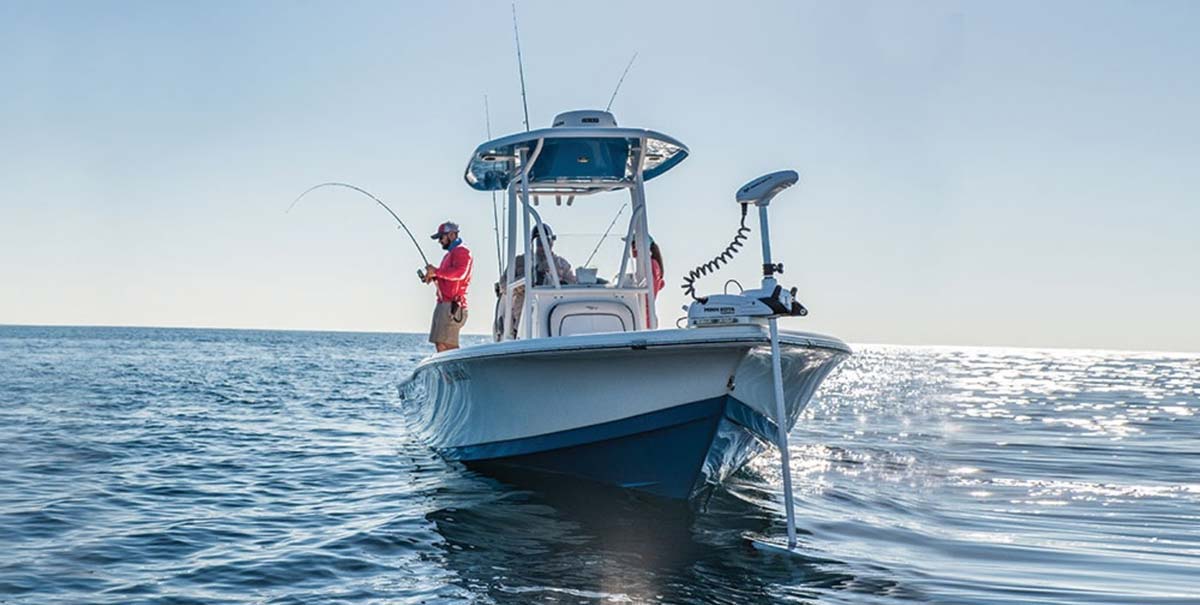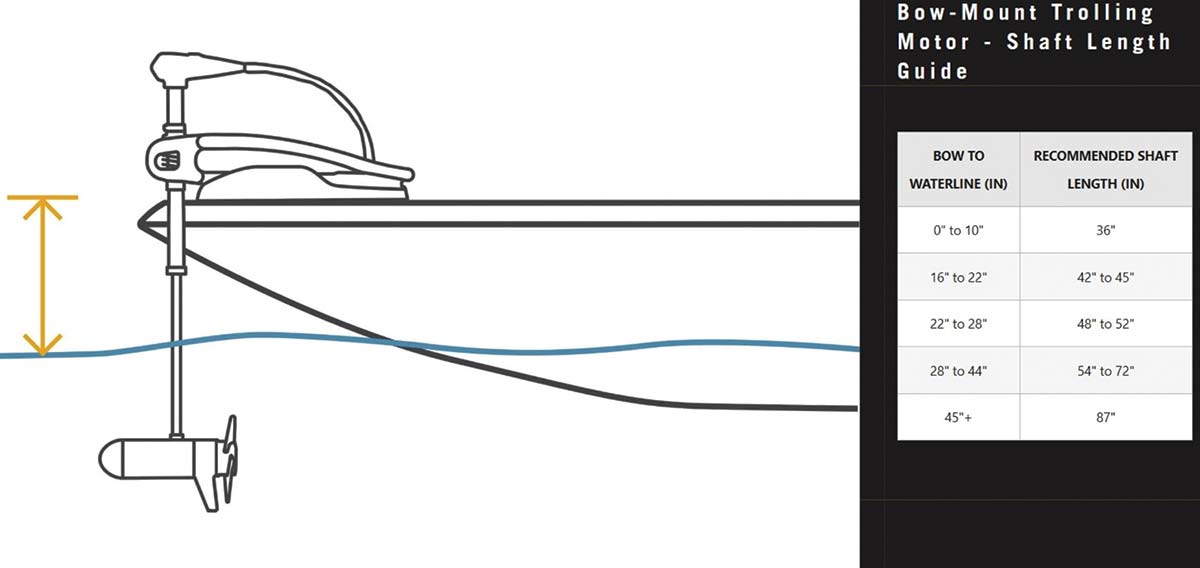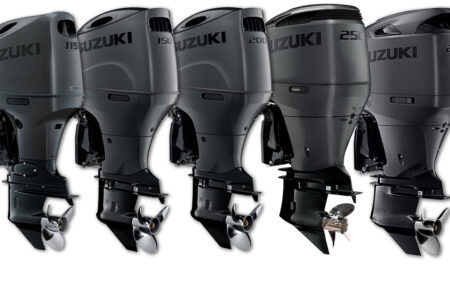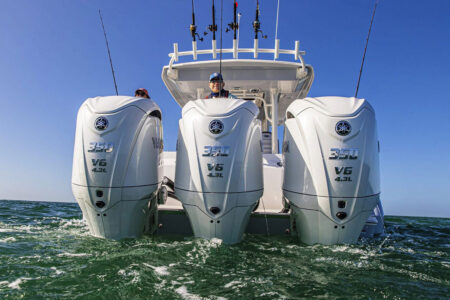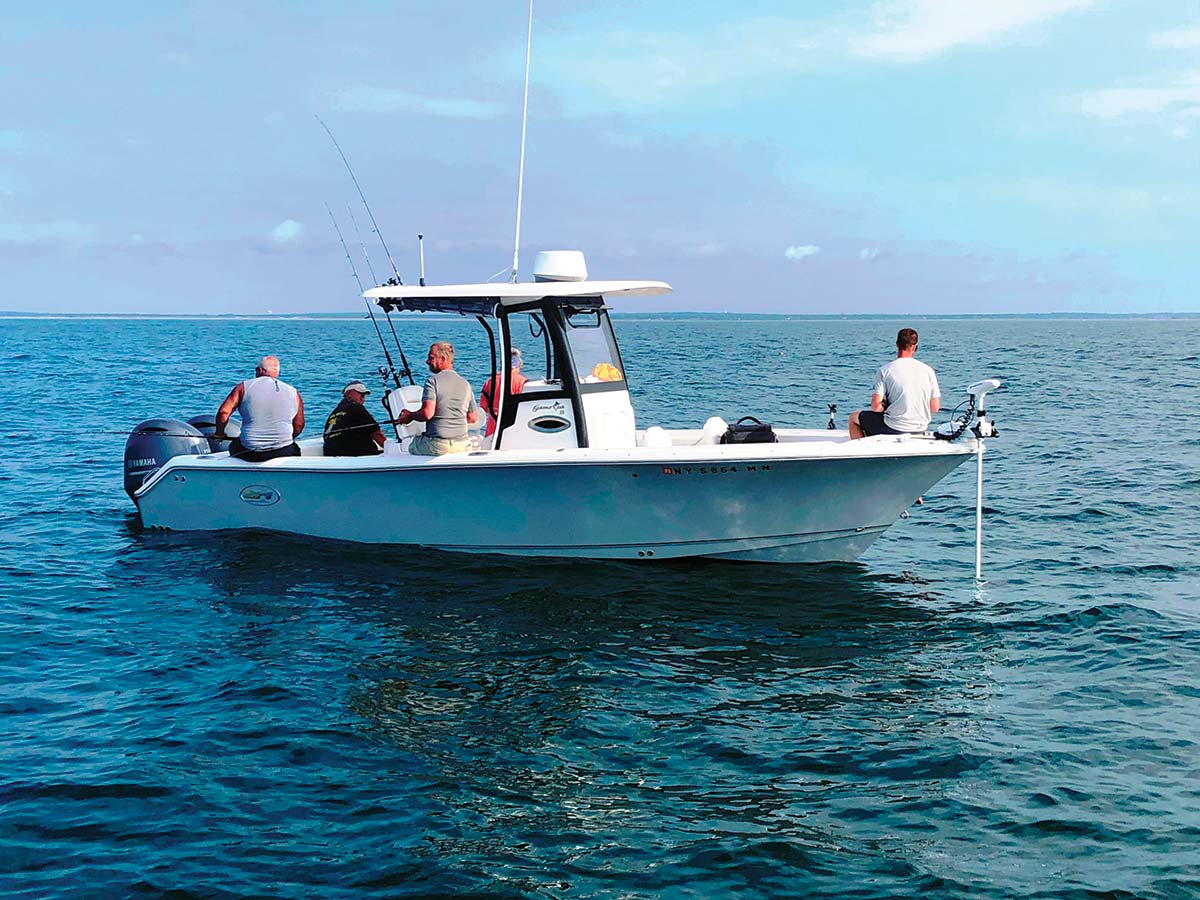
The advantages of ultra-quiet, stealth mode fishing coupled with “Spot Lock” anchoring.
Anglers lucky enough to be running independent, joystick-controlled outboards are no strangers to pinpoint position control during their sportfishing escapades. Mercury, Yamaha and Suzuki all have their special systems that can GPS-lock you over a productive spot and jog you in any direction at the touch of a button.
But there are a few downsides to setups like these; first, they will set you back a bunch of money, with the hardware and installation going for $15k to $20k or more, depending on the number of outboards and the complexity of the hookup. Secondly, using your big block outboards to do this job creates a heck of a surface ruckus, enough to spook wary fish if you are operating in relative shallow inshore waters.
Enter the latest generation of electric trolling motors, which are a misnomer of sorts, since they do a lot more than just offer the operator one-dimensional trolling. Some of the stronger 36-volt units offered by industry leaders Minn Kota, MotorGuide and Rhodan produce over 100 pounds of thrust; and with XL shaft lengths that range from 72 to 87 inches, they can find a place on the bows of boats upwards of 35 feet in length.
Even if you are currently operating a multi-outboard joystick system, an electric trolling motor can offer even more functionality, and do it in ultra-quiet stealth mode. In addition to electric anchoring over a piece of bottom structure, you will now have the ability to sneak up on your quarry without spooking them, thus having more opportunities to hook up your fish du jour.
Even if you max out with the largest electric motor, with a triple 12-volt (36 volts total) heavy duty battery setup and factor in some installation and rigging costs on top of the requisite components, you’re looking at an investment cost of $5k to $7k, with significant savings if you do it yourself. Because of their unique functionality and relatively affordable cost, electric trolling motors are a huge force-multiplier for single engine outboards that are looking to enhance their fishing capabilities, allowing owners to play with the big boys, but at a fraction of the investment cost of their multi-outboard brethren.
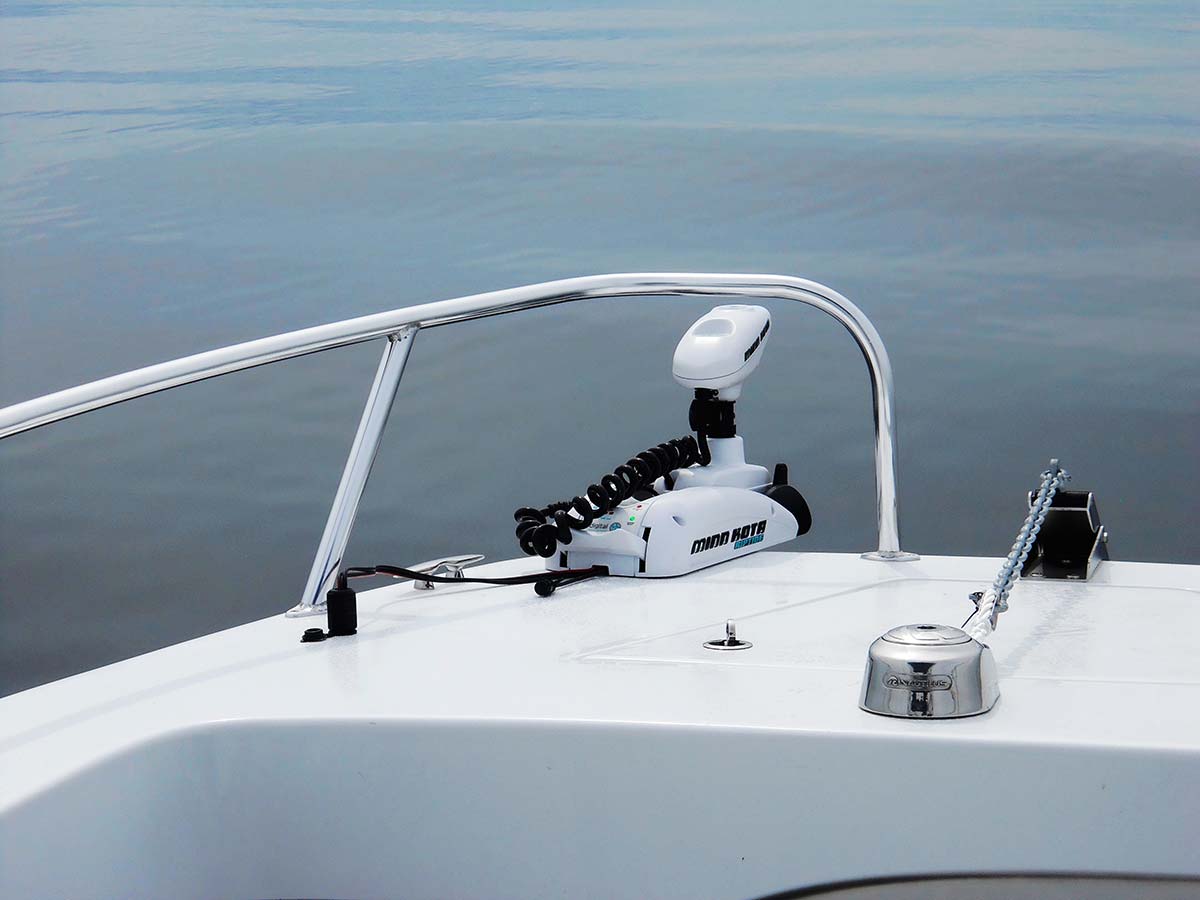
Hold Your Ground
The current big three electric trolling motor manufacturers all have their trademarked names for basically saying the same thing. Minn Kota calls it their Spot-Lock GPS Anchor; Rhodan terms it Anchor Mode; and MotorGuide calls it Pinpoint GPS. Bottom line, it’s just three ways of stating that with their electric motor, you can hold your ground over a productive fishing spot, regardless of wind, waves, tides or currents. Some systems like the Minn Kota One Boat Network will allow operators to work the trolling motor from a variety of interconnected onboard sources, while others offer gateway connectivity to compatible multi-function displays. All three major brands allow the driver to hold fast over a specific location, or jog around the compass in the immediate neighborhood to determine if there’s a more productive edge via a handheld wireless controller.
While the concept of an electric anchor to hold your spot is a great feature, it’s not an automatic game-changer by itself. You’ve got to learn how to use it in a variety of situations, and no two are the same. I’ve seen this electric spot lock feature come up empty in places like Long Island Sound or other large waterways where you have fast moving current over deep water. Anglers can set themselves up over wrecks and sea mounts in 150 to 200 feet of water at the fastest stages of the tidal current and if the wind and water are moving in the same direction, it can be a total mess, with your dropped baits being 100 yards or more down-current of where you think they are by the time they hit bottom. Plus you’ll also get a few dirty looks when you attempt to hold the spot while other captains are drifting by at 3 to 5 knots, doing their best to avoid a collision. When you are all by your lonesome, this is a great feature, but it might turn into a real liability when working on a crowded spot.
If you do decide to hold your spot in deep, moving water, you might need to set up 50 to 100 yards up-current of the intended fishing location and have your baits or lures angle in to the promised land. It takes some practice to master this art in varying conditions, but it’s just another tool in the toolbox when the situation calls for this skill set.
Most high-end electric trolling motors also allow for the operator to jog north, south, east or west in minor increments to really work a productive honey hole. The easiest way to engage this feature is to deploy the wireless controller and work the directional button. It’s a fact that fish will change locations within a defined submarine geography during different stages of a tide and this feature addresses this nuance of micro management. It is like waving the magic wand; the boat will steer and stop exactly where you want it to, even in windy, moving water.
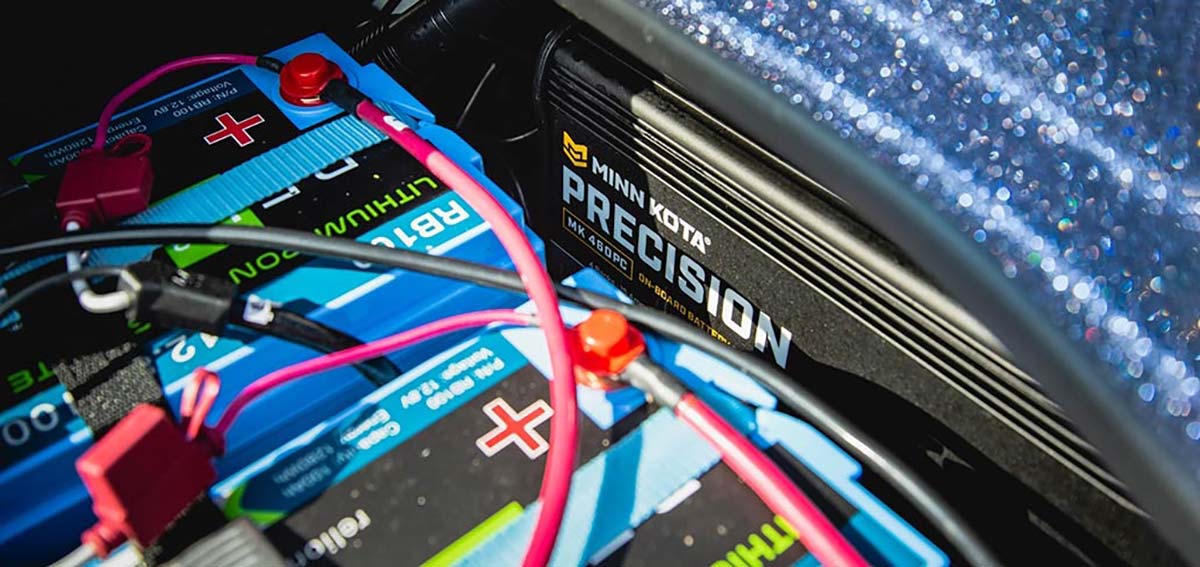
Slow Down Or Change Drifts
Have you ever drifted an inlet or moving tide in the bay at the fastest stages, along with a wind that is blowing in the same direction? This can make holding bottom with smallish (2- to 6-ounce) sinkers an almost impossible endeavor. It’s no fun going to 12 ounces or more in these scenarios, since this takes a lot of the feel, finesse and fun out of the fishing experience. Enter the multi-mission capabilities of the electric trolling motor to save the day. By engaging the motor in the opposite direction (heading into the current), it is possible to slow down the drift to a more manageable speed where you can employ lighter weight sinkers to feel more subtle bites. It’s sort of like having an on-demand electric drift anchor or drogue, but without the hassle of deploying or retrieving it before and after each drift.
| SHAFT SELECTION |
| Choosing the proper shaft length is an important step in adding an electric trolling motor to your ride. If it’s too short, the prop won’t be sufficiently submerged and it won’t bite. The folks at Minn Kota recommend submerging the center of the motor section at least 12 inches below the surface, with a couple of caveats. First, add 5 inches to the waterline measurement for fishing in rough water; the optimal operating mode is with the trolling motor trimmed all the way down. Also, add 9 inches of added depth for bow-mount, hand-controlled tiller models.
Bow To Waterline Recommended Shaft Length 0″ to 10″ 36″ 16″ to 22″ 42″ to 45″ 22″ to 28″ 48″ to 52″ 28″ to 44″ 54″ to 72″ 45″+ 87″ |
While this will work in shallower waters, usually 30 feet or less, as soon as you get into more extreme depths, the effect of more water moving against your extended scope of line might race your bait along the bottom at a faster speed than you are drifting, so be advised.
If you are moving at a perpendicular angle in an inlet or along a shoreline, the electric trolling motor can be adjusted to change your angle to work a fathom line or drop-off accordingly. This is a great feature and is sure to frustrate your neighbors who probably don’t have this ability to alter course and fine tune their drift.
When working the offshore lobster pots for dorado, tuna and wahoo, an electric trolling motor is an invaluable aid to keep you on top of the mahi schools when they decide to venture out from underneath the ball/high-flyer structure and hover near your boat and zip through the chum/chunks. Wind and waves, as well as random currents, can totally affect how much time you spend in the strike zone and an electric motor will give you a big assist when called upon to keep your boat close to the action for as long as possible.
On those days when there is no wind or current to make things happen, an electric trolling motor can be deployed to steer in a variety of directions or speeds to create perfect drifting conditions to make your baits come alive and get bottom dwellers in a feeding mood. When working near offshore waters, I have also incorporated electric trolling motors to adjust my shark drifts to the perfect speeds, usually .75 to 1.5 knots, with some excellent results. Sure, you can power drift with your engine(s) if the situation calls for it, but an electric trolling motor allows you to travel in stealth mode and really fine-tune both the drift speed and direction. Plus the ultra-quiet electric thrust will not spook more wary gamefish species like tuna, dorado or cobia if they happen to do a drive-by in your chum slick, putting them in a more receptive mood for your offerings.
Most electric trolling motors can be programmed to follow a certain path, contour line or depth, allowing you to fan-cast a shoreline in the back bays, the edge of a deep channel or just outside of the surf line along the beach. Slight changes of direction or speed can be easily accomplished via the wireless controller that comes as standard equipment on the majority of 24- and 36-volt electric trolling motors. When the current starts moving faster or slower, or the wind changes direction, minor tweaks of the control buttons directs the electric motor to keep you and the crew in the happy zone for as long as possible, also allowing you to make repetitive drifts over more production spots.
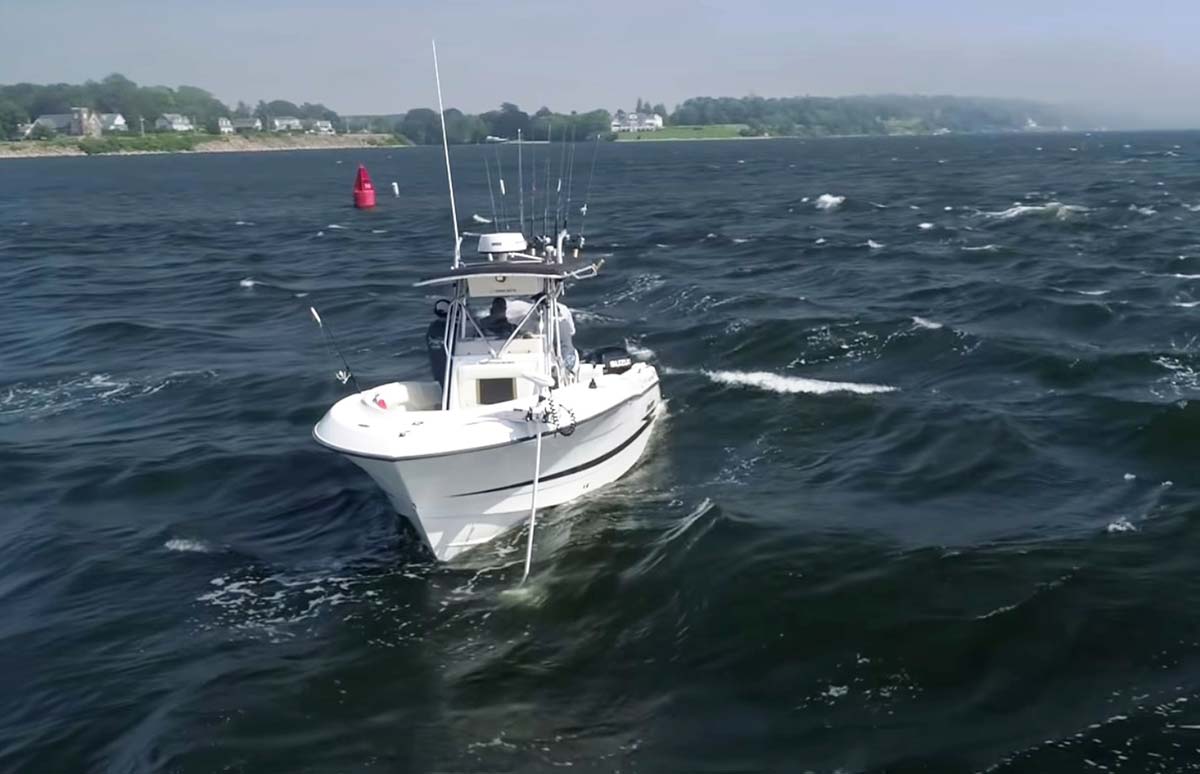
Working Over Bait & Birds
With the proliferation of bunker schools tight on the beaches, following those “pogies” on the edges of the massive pods can pay dividends. Trophy sized bass, bluefish, tuna and a variety of big hungry sharks have all been known to raid the party and will respond eagerly to a drifted bunker sent back into the melee. One problem that many folks have while snagging bunker for bait is getting them boatside to re-rig using a circle hook, and then redeploy quickly enough to get that bunker to its school. Half the time, they’ll hide under your boat and remove themselves from the strike zone. Using an electric trolling motor to slow troll your hooked bunker back into the pack and then follow it on the edges of the school is a huge game-changer. The stealth qualities of the quiet electric motor will not rile up the bunker pod like an outboard or inboard engine, plus you’ll be able to get close to the predators that follow them and not spook them out of a feeding mood.
| BOW TO STERN |
| Most 24-volt (70 to 80 pounds of thrust) and 36-volt (90 to 100-plus pounds of thrust) electric motors are bow-mounted and feature either a wired or wireless foot pedal or a wireless hand controller. However, there are also transom mounted units that are easy to slip on and off the boat, without the necessity of a permanent mount. I have a MotorGuide R3 saltwater unit that weighs less than 25 pounds and generates 55 pounds of thrust using a single 12-volt battery. This “portable” easily slips on and off the transom of both of my EdgeWater center consoles when needed with carry-along 12-volt, deep-cycle, 27-series AGM battery. Sure, I have to control everything from a manual tiller handle with an adjustable 36-inch shaft, but it’s a relatively inexpensive solution.
For Minn Kota fans, they also make a transom-mounted, manual Riptide 12-volt electric with either 45 or 55 pounds of thrust and offer both a 36-inch shaft and a longer 42-inch shaft if your boat has a deeper transom. These are also reasonably priced in the $450 to $575 range, depending on the model. – J. Raguso |
Same goes for following flocks of feeding birds or bottom-feeding tuna eating sand eels down deep. Jogging the electric trolling motor into the fray from the outside edges will typically not spook the bait or predators just under the surface or at mid-depths. Using the electric motor to follow bunker pods at mid-depths or schools of squid, sand eels, tinker mackerel or whatever is a bigtime ace in the hole for a variety of offshore situations. I have observed more tuna hunters using electric propulsion when chunking for tuna along the canyon edges, to either slow down their drift in 100- to 150-fathom waters or to stay on top of a school of foraging thunnus.
Although the length of run time on your electric trolling motor is a function of the amp hour capacity of your batteries, voltage and their state of charge (as discussed in April’s lithium-ion battery article in The Fisherman) it’s possible that your electric trolling motor can get you back to the dock, launching ramp or closer to a Sea Tow or Tow BoatUS contractor for a tow back to home port. If you are in the bay and your primary power plant takes an unscheduled vacation, your electric motor should be able to get you back to the launching ramp or marina, where you can effectuate repairs on the main engine. It’s not the most ideal option, but it’s better than rowing. If your engine won’t start at the end of a long drift, spinning up the electric motor can help you avoid obstacles like jetties, bridge pilings and rock piles, grounding in shallow water or collisions with other boats.
Electric trolling motors are here to stay and are sure to become more mainstream as additional anglers experience the many benefits of their multi-mission capabilities in a variety of inshore and offshore sport fishing scenarios.
